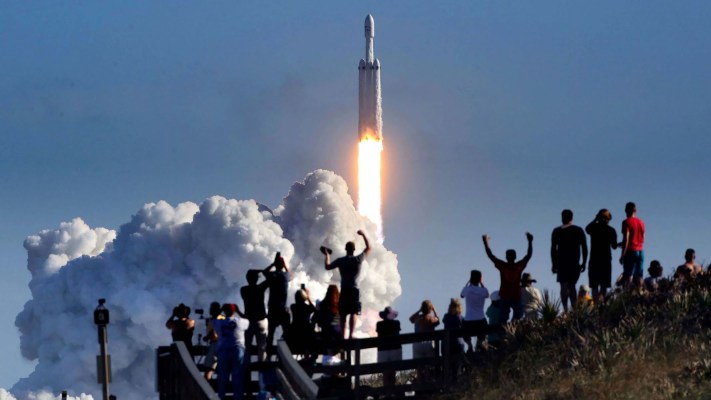Cell phone connectivity from space
Multiple players in the industry have recently set their sights on direct-to-mobile connectivity from space. While it’s still a very early market with limited existing capabilities, companies such as Apple, T-Mobile, Globalstar, SpaceX, AST SpaceMobile and Lynk Global are targeting this area. Multiple mobile network operators are already on board, even before some of the first operational spacecraft have been launched.
Apple has partnered with Globalstar to provide SOS connectivity with its new iPhone 14, and T-Mobile is planning to begin low-earth orbit (LEO) connectivity in 2023 through SpaceX, which recently filed an application with the US FCC to include direct-to-cellular capabilities in its Gen 2 Starlink satellites. Amazon is also set to launch its first batch of LEO satellites for Project Kuiper.
Most of these early projects will not provide high-speed broadband from space, and will instead offer low-bandwidth connectivity suitable for emergency calls and texts. All of this aims to service the currently underserved population around the world, which does not live within reach of traditional cell tower networks.
Commercialization of the moon begins in earnest
Despite the economic uncertainty, we believe new records will be established in spacetech as giant commercial projects get funded.
Extensive government and commercial efforts are underway to head “back to the Moon” decades after the Apollo program finished in 1972. This has been kicked off by NASA’s Artemis program, which saw the Artemis 1 mission’s Orion capsule returning to Earth after spending almost a month traveling around the Moon.
At almost the same time, the first fully-privately-funded lunar mission was launched by SpaceX for Japanese company iSpace, which is taking a fuel-efficient trip to the Moon and is due to get there in April. This would be the first fully commercial mission to land on the Moon, a milestone in the cooperation between Japan and the U.S. in space. Other commercial companies, such as Intuitive Machines and Astrobotic, are also targeting Moon landings.
With the first commercial companies headed moonward alongside national efforts, we expect 2023 to be a breakthrough year for the cislunar ecosystem.
Three drivers underpin revenue growth
Developments in the defense, cybersecurity and climate sectors will prove to be strong tailwinds for revenues in spacetech in 2023. Record growth in defense budgets driven by the war in Ukraine and rising geopolitical tensions will drive business, and governments’ increasing desire for sovereign capability from space assets will lead to some huge orders in the sector. And, since cybersecurity is another tool in the geopolitical toolbox, satellite resilience against attacks is a priority.
A growing reliance on datasets generated in orbit means the security demands for the flow of data from the satellite to the cloud and ground stations are growing exponentially. We see 2023 as the year when the industry embraces quantum capabilities.
Finally, the link between space and climate is now clearer than ever, as novel data collected from space helps to unlock previously hidden insights about the Earth’s surface and atmosphere, which feed into climate change models. We have seen investment in such startups growing steadily over the past few years, and expect this trend to accelerate in 2023.
Record year for new space agencies to be created
While certain countries have had space agencies for decades, many more have been set up in recent years. In the past decade alone, new space agencies were set up in various countries, including Azerbaijan, Costa Rica, UAE, Portugal and New Zealand.
Four new space agencies were created in 2021, and Croatia, Iceland, Oman, Yemen, Singapore, and members of the African Union have announced plans to form space agencies in 2023.
With these agencies will come greater cooperation in space and greater progress towards in-space and cislunar activities.
The largest (private) investments will occur in 2023
Despite the economic uncertainty, rising interest rates, soaring inflation and recession, we believe new records will be established in spacetech as giant commercial projects get funded.
While the second half of 2022 saw a dip in growth-stage funding rounds, we believe several mega-rounds will close in 2023, producing another record year.
SpaceX becomes a competitor to all
SpaceX has been expanding beyond its initial beachhead launch market. With nearly 3,500 satellites, SpaceX is increasingly diversifying its Space offerings, moving ever closer to being a fully integrated space services provider. In December 2022, SpaceX revealed another new business line called Starshield, which will offer Earth observation capabilities to U.S. Government agencies.
Ultimately, in the coming year, this may be one of the forces driving consolidation in the ecosystem.
Regulation drives in-orbit services market
Space sustainability has become a priority for agencies and regulators globally. While 2022 saw the FCC reducing the timeframes for satellite operators to de-orbit their satellites post-mission completion from 25 years to just five years, we expect to see regulators implementing further restrictions in 2023 through launch licensing.
This is great news for the growing list of companies offering debris removal, life extension, and in-orbit servicing and refuelling.
